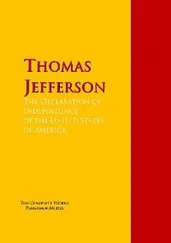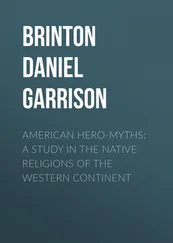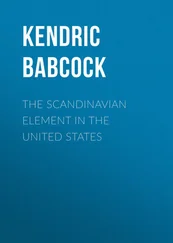Hubert Bancroft - The Native Races [of the Pacific states], Volume 5, Primitive History
Здесь есть возможность читать онлайн «Hubert Bancroft - The Native Races [of the Pacific states], Volume 5, Primitive History» — ознакомительный отрывок электронной книги совершенно бесплатно, а после прочтения отрывка купить полную версию. В некоторых случаях можно слушать аудио, скачать через торрент в формате fb2 и присутствует краткое содержание. Жанр: foreign_antique, foreign_prose, на английском языке. Описание произведения, (предисловие) а так же отзывы посетителей доступны на портале библиотеки ЛибКат.
- Название:The Native Races [of the Pacific states], Volume 5, Primitive History
- Автор:
- Жанр:
- Год:неизвестен
- ISBN:нет данных
- Рейтинг книги:5 / 5. Голосов: 1
-
Избранное:Добавить в избранное
- Отзывы:
-
Ваша оценка:
- 100
- 1
- 2
- 3
- 4
- 5
The Native Races [of the Pacific states], Volume 5, Primitive History: краткое содержание, описание и аннотация
Предлагаем к чтению аннотацию, описание, краткое содержание или предисловие (зависит от того, что написал сам автор книги «The Native Races [of the Pacific states], Volume 5, Primitive History»). Если вы не нашли необходимую информацию о книге — напишите в комментариях, мы постараемся отыскать её.
The Native Races [of the Pacific states], Volume 5, Primitive History — читать онлайн ознакомительный отрывок
Ниже представлен текст книги, разбитый по страницам. Система сохранения места последней прочитанной страницы, позволяет с удобством читать онлайн бесплатно книгу «The Native Races [of the Pacific states], Volume 5, Primitive History», без необходимости каждый раз заново искать на чём Вы остановились. Поставьте закладку, и сможете в любой момент перейти на страницу, на которой закончили чтение.
Интервал:
Закладка:
The Chichimec migration was followed by many others at irregular intervals, ending with that of the Aztecs, all of which will be spoken of in their proper place. The chronologic order attributed by tradition to these migrations is not to be relied on, giving, as may be supposed, only a vague idea of the order in which the different nations acquired some prominence in and about the valley of Mexico. In its ancient centre – not in Anáhuac, whether it was in the north or south – the primitive Nahua power was overthrown, or from that centre it was transferred to be re-established by exiled princes and their descendants on the Mexican plateaux. This transfer, whose nature we may vaguely comprehend, but of whose details we know nothing, is the event or series of events referred to by the various migration-traditions. The recollections of these events assumed different forms in the traditions of different tribes until each nation claimed or were deemed by the Spaniards to claim a distinct migration from its former home. The accounts of the migrations following the Toltec will be given in their proper place, and here we have only to notice that the Seven Caves are mentioned as a starting-place or station in most if not all of these migrations, and that the only names that appear in the traditions applied to the ancient Nahua dwelling-place are Aztlan, Culhuacan or Teo Culhuacan, and Aquilasco. These names are perhaps applied to cities in the ancient home, but it is by no means certain, as will appear later, that they did not all belong to localities in central Mexico. At least neither the names nor the events of the migrations as reported afford any proof of geographical location. The analogy between Culhuacan and Culiacan is not a strong argument in favor of a north-western location, or at most does not outweigh the identity of the names Culhuacan and Nachan. A palm-tree painted on the picture-writing supposed to record one of the migrations, in connection with the starting-place, as has been remarked by several authorities, seems to favor the idea that the point of departure was in the south rather than in the north, and would certainly be a circumstance of considerable weight against an extreme northern location for Aztlan.
The Abbé Brasseur de Bourbourg attempts to reconcile the general fact shown by all the earlier traditions that the primitive Nahua power was in the south, with the idea of a migration from the north apparently entertained by each of the nations of Anáhuac and by the Spanish writers. According to his idea the Nahuas, overcome by the monarchs of Xibalba, were driven from Chiapas, dwelt a few years on the Pacific coast at Tlapallantzinco, and thence migrated north-westward in different bands, following the general direction of the coast, to Sonora and Upper California. Along this route, as this author claims, distinct traces of their migration are apparent, referring perhaps, although he does not say so, to linguistic traces. In this northern region, about the Gulf of California, they established great kingdoms and built great cities, each Nahua colony becoming a centre of civilization to the wild tribes with whom it came in contact. From this region, to places in which the names Teo Culhuacan, Aztlan, etc., of the traditions may be applied, the different Nahua nations descended into Anáhuac in successive migrations from the seventh to the twelfth century, impelled by civil convulsions or the pressure of outside and warlike tribes. 360
I am inclined to find in the abbé's theory a statement – too definite perhaps – of a general fact. That is, the Nahua power – established in eastern and south-eastern Mexico by the Olmec tribes almost simultaneously with its growth in the south – was after its overthrow in Central America established by exiled nobles over western and north-western Mexico. I find no evidence, however, that the Nahua power ever became settled and flourishing farther north than Durango and Sinaloa, although the influence of their institutions may, not improbably, have extended to the Sonora tribes; into California and the far north-west the Nahuas never penetrated. If a Nahua empire or political power ever really existed in the north-west, its centre was probably in the region of Quemada, in Zacatecas and Jalisco. Soon, however, the valley of Mexico became the political centre, and the subsequent history of the country was essentially a history of Anáhuac. The modern aboriginal annals of each nation dated from its rise to notice in Anáhuac, and in the traditions of previous history imperfectly communicated to the Spaniards, their former greatness in the south, their defeat and exile, their life in outside provinces, and their settlement in the valley were sadly confused.
Mendieta, Torquemada, Gomara, and others, record the popular tradition of the settlement of Mexico as follows: An old man Iztac Mixcohuatl, by his wife Ilancueitl, in Chicomoztoc, or the Seven Caves, had six sons, Xelhua, Tenuch, Ulmecatl, Xicalancatl, Mixtecatl, and Otomitl. Tenuch's descendants were the Aztecs; Xelhua gave his name to no nation, but his followers settled at various points in the south-east; the others founded the nations which took their names. Mendieta adds that by another wife the same old man had a son named Quetzalcoatl. 361Piñeda tells us that a nephew of Votan divided the land of Anáhuac. 362According to Arlegui the Toltecs came from the west and divided New Spain between their seven families. 363I believe I have now given all the important traditions that seem to belong to the pre-Toltec period in Mexico, and I deem it unnecessary to refer to the authors who merely give an abridged version of the same accounts, many of them confining themselves to the simple statement that the Toltecs, a very skillful people, came first from the north and settled in the region afterwards known as New Spain.
Returning to the south, it only remains to examine briefly the primitive Maya annals of Yucatan, which confirm in a few points those of other peoples, so far as they relate to the great American centre of civilization in the south. These annals will be given in full elsewhere; a very general view, with especial reference to the points referred to, will suffice here. A prevalent belief among the Mayas at the time of the Conquest was, that the peninsula was settled in ancient times by two races, one from the east, the other from the west. It is not implied that they came at the same period, but rather that the migration from the east preceded that from the west by many centuries. Lizana tells us that in ancient times the east was called cenial , or 'little descent,' and the west nohenial , or 'great descent,' believing that these names indicate the comparative numbers of the respective colonies. Landa and Herrera record a tradition that the oldest inhabitants came from the east, the sea being divided to afford them a passage. Cogolludo concludes, contrary to the opinion of Lizana, that the colony from the east must have been much more numerous as well as more ancient than the other, because of the universal use of the Maya language and of Maya names of places throughout the peninsula – a conclusion that carries little weight, since it rests mainly on the assumption that those who came from the west spoke the Aztec language, an assumption for which there is no authority whatever.
The personage whose name appears first in the Maya tradition is Zamná, son of the chief deity, who taught the people, invented the hieroglyphic alphabet, and gave a name to each locality in Yucatan. His rôle, so far as anything is known of it, was precisely the same as that of Votan in Chiapas. Zamná is reported to have lived long in the land and to have been buried at the close of his career at Izamal. During his life he founded Mayapan, 'standard (or capital) of Maya,' – Maya being the native name of the country and signifying according to some authorities 'land without water' – a city which was several times ruined and rebuilt after its founder's time. Zamná may be most naturally connected with the traditional migration from the east. Cogolludo, it is true, states that he was at the head of the other colony, and this statement is repeated in one place by Brasseur, but as the Spanish writer directly contradicts his statement on the same page, not much importance is to be attached to it. Vague as it is, the tradition of Zamná and his followers from the east seems identical with that of Votan. If we suppose that such persons as Zamná and Votan actually had an existence – a supposition which like its opposite forms no part of this chapter – it would be impossible to determine whether the two were the same, or Zamná the companion, disciple, or descendant of Votan; but we may well believe that the period, the empire, the institutions alluded to in the Maya record are the same as those connected with the Votanic or Xibalban traditions. The ancient power whose centre was in Chiapas, Tabasco, and Honduras, extended north-eastward into Yucatan as it did north-westward into Anáhuac. Ordoñez states, as usual without giving his authority, that Mayapan was one of the allied capitals, which with Nachan and Tulan constituted the Votanic empire. The fact that the name of the Cocomes, the most ancient people, or at least the oldest line of kings and nobles, in Yucatan signifies in the Nahua tongue 'serpents,' like the name Chanes applied to Votan's followers, may have some significance, although in the Maya tongue Cocome is also said to mean 'listener.'
Читать дальшеИнтервал:
Закладка:
Похожие книги на «The Native Races [of the Pacific states], Volume 5, Primitive History»
Представляем Вашему вниманию похожие книги на «The Native Races [of the Pacific states], Volume 5, Primitive History» списком для выбора. Мы отобрали схожую по названию и смыслу литературу в надежде предоставить читателям больше вариантов отыскать новые, интересные, ещё непрочитанные произведения.
Обсуждение, отзывы о книге «The Native Races [of the Pacific states], Volume 5, Primitive History» и просто собственные мнения читателей. Оставьте ваши комментарии, напишите, что Вы думаете о произведении, его смысле или главных героях. Укажите что конкретно понравилось, а что нет, и почему Вы так считаете.
![Hubert Bancroft The Native Races [of the Pacific states], Volume 5, Primitive History обложка книги](/books/749157/hubert-bancroft-the-native-races-of-the-pacific-s-cover.webp)









![Hubert Bancroft - The Native Races [of the Pacific states], Volume 1, Wild Tribes](/books/750126/hubert-bancroft-the-native-races-of-the-pacific-s-thumb.webp)

